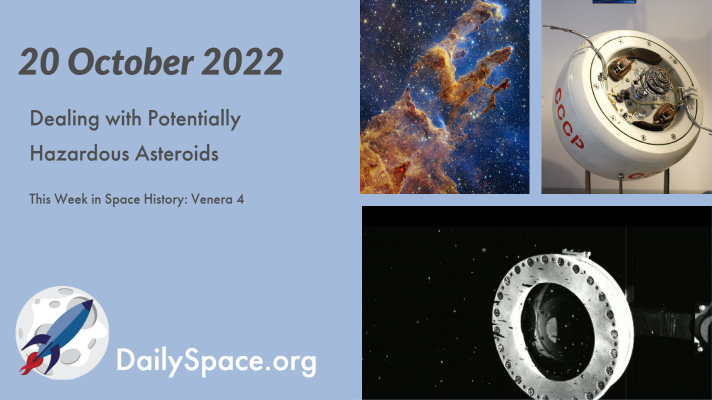
Oct 21, 2022 | Asteroids, Astrobiology, Curiosity, Daily Space, ESA, Galaxies, JAXA, JWST, Mars, OSIRIS-REx, Space History, Star Forming Region, Venus
A trio of asteroid-related stories crossed our emails this week: Bennu’s sample is on schedule for next year’s return, researchers have developed a tool to measure an asteroid’s density distribution, and 3200 Phaeton’s rotational period has accelerated. Plus, JWST’s new Pillars of Creation image, and this week in space history, we look back at Venera 4.
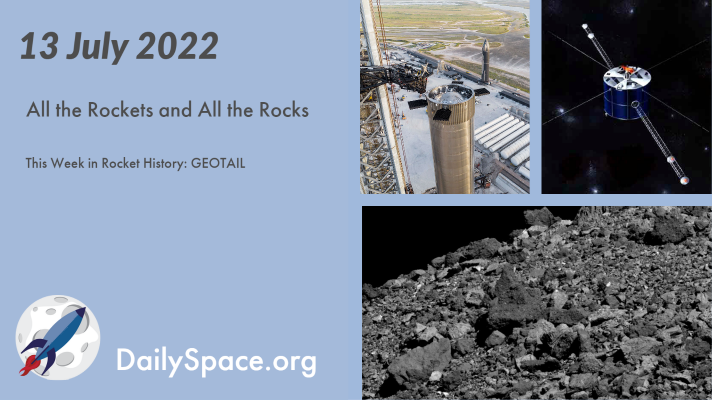
Jul 14, 2022 | Asteroids, Daily Space, ESA, Exoplanets, Neutron Stars / Pulsars, OSIRIS-REx, Rocket Lab, Rockets, ROSCOSMOS, Soyuz, Space China, Space History, SpaceX, Starlink, Vega
With the release of JWST’s first science images behind us, we now catch up on all the rocket launches of the past few days. Meanwhile, Bennu continues to be a favorite research topic and is the subject of three new papers released this week. Plus, pulsar-orbiting planets, and this week in rocket history, we look back at GEOTAIL.
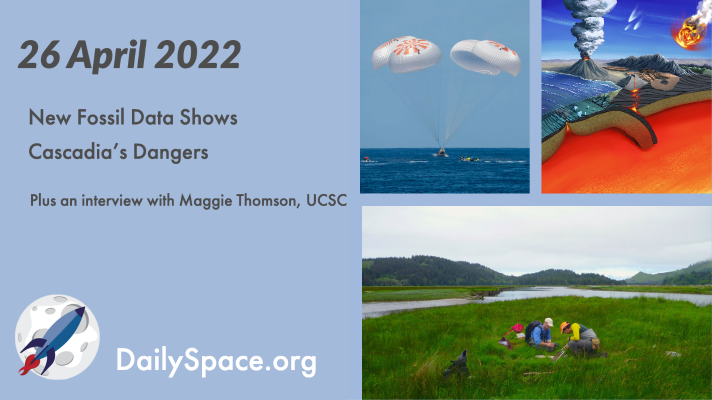
Apr 27, 2022 | Asteroids, Astrobiology, Climate Change, Crewed Space, Daily Space, Earth, Guest Interview, Lucy, Mars, OSIRIS-REx, Rockets, Space China, Spacecraft, SpaceX, Starlink
An analysis of sediment core samples taken at the Salmon River Estuary in Oregon provides evidence that the massive 1700 Cascadia earthquake caused 15 meters of slip along the shoreline, which lead to over a meter of coastal subsidence. Plus, all the rocket launches, a few mission updates, making Mars bricks with urea, and an interview with Maggie Thompson from UC Santa Cruz about using methane as a biosignature.
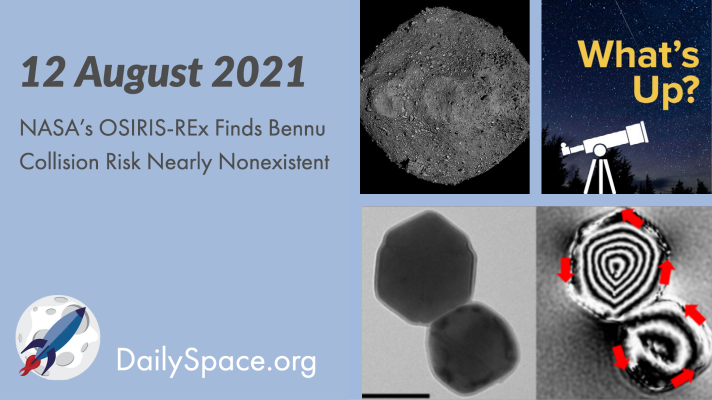
Aug 13, 2021 | Asteroids, Daily Space, Earth, ESA, Exoplanets, OSIRIS-REx, Our Solar System, Sky Watching, Spacecraft, Stars, Venus
After careful analysis of orbital data, gravitational forces, and several other factors, NASA’s OSIRIS-REx team calculated the risk of a collision with near-Earth asteroid Bennu to be 0.057% through 2300. Plus, magnetites in meteorites reveal solar system history, and the constellation Ophiuchus is What’s Up.

Jul 1, 2021 | Asteroids, Crewed Space, Daily Space, JAXA, OSIRIS-REx, Random Space Fact, Rockets, ROSCOSMOS, Soyuz, Space History, Spacecraft, SpaceX
On this week’s Rocket Roundup, a sounding rocket launches with student payloads, the Russian Space Force launches a classified satellite, and finally, a routine ISS resupply mission. Plus, this week in rocket history, we look back at STS-71 and the first Shuttle-Mir docking.
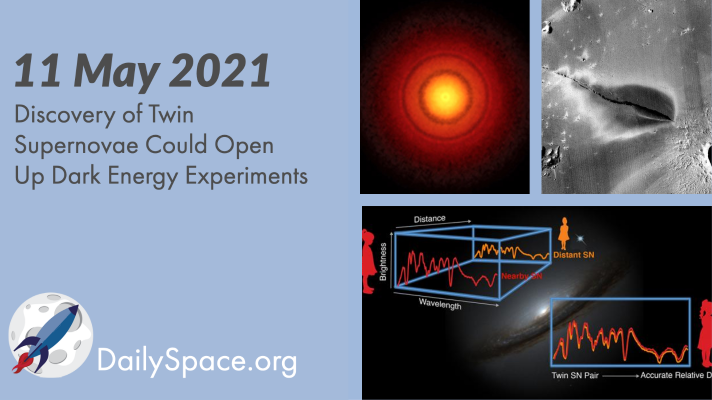
May 12, 2021 | Asteroids, Daily Space, Exoplanets, Galaxies, Mars, OSIRIS-REx, Planets, Star Forming Region, Supernovae, Voyager I & II
Researchers found that among about 50 supernovae, many had nearly identical spectra, paving the way for making more accurate distance calculations. These calculations, in turn, open up the possibility of using supernovae to better search for dark energy. Plus, OSIRIS-REx, Voyager I, planetary formation, and volcanoes on Mars.








 We record most shows live, on Twitch. Follow us today to get alerts when we go live.
We record most shows live, on Twitch. Follow us today to get alerts when we go live.